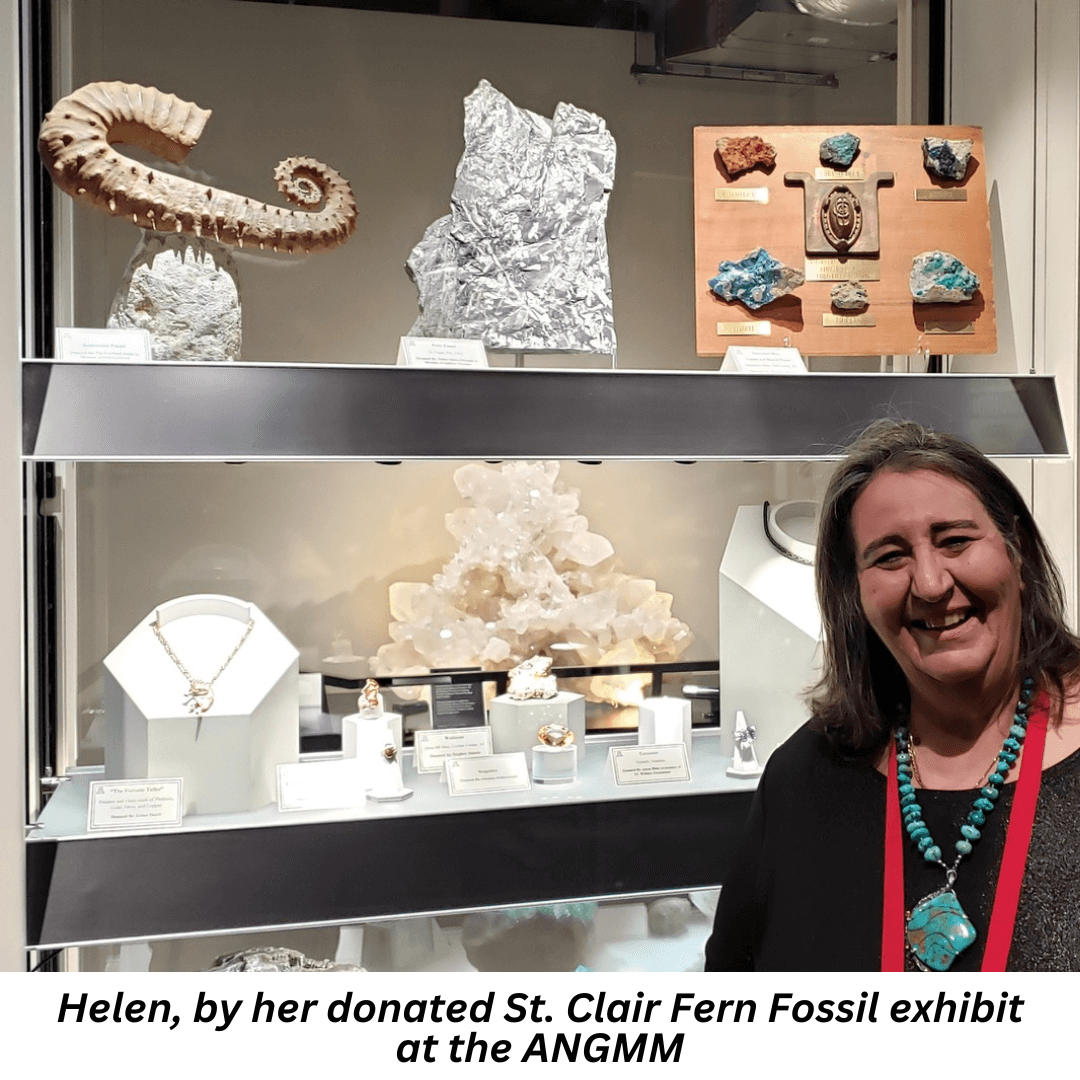The fern fossils from St. Clair, Pennsylvania, are world-famous. These plant fossils occur in a black shale matrix and have a characteristic white coating of the mineral pyrophyllite. These fossils are about 300 million years old, dating from the Pennsylvanian Epoch of the Carboniferous Period, when the great anthracite (a.k.a., hard coal) deposits formed in the Alleghany Mountains. The fossil plants are associated with the coal beds since coal is the product of thick accumulation of decayed and compacted plant material. The borough of St. Clair, located in Schuylkill County, was established in 1850 in the Commonwealth of Pennsylvania.
St. Clair was Xpo Press staff writer Helen Serras-Herman’s husband Andrew Herman’s hometown. He was born and raised there, the oldest of five siblings. His father was a coal miner who worked from the age of eleven in the underground anthracite coal mines, until they closed in the early 1950s.
After Helen’s husband passed away in August 2022, Helen donated in his memory several large fern fossil specimens from their collection to the Alfie Norville Gem & Mineral Museum in Tucson. Helen says that she is very thankful to curator Dr. Susan Leib for accepting her donation. Two of them are currently on exhibit at the museum.
Be sure to visit the museum at the University of Arizona while you’re in Tucson for the 2025 Tucson Gem, Mineral & Fossil Showcase. It’s located in the Pima County Historic Courthouse at 115 N. Church Ave., Suite 121. Hours are 10 a.m. to 4 p.m., Tuesday through Saturday, closed Sunday and Monday.
All photos © Helen Serras-Herman




